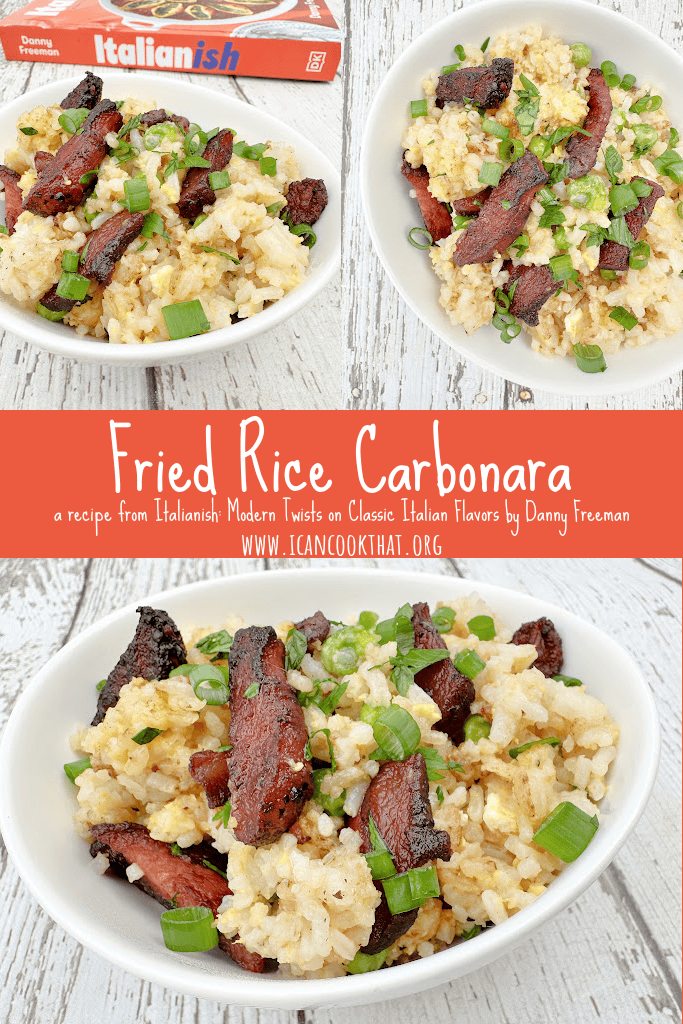Note: I have permission to share the below Fried Rice Carbonara recipe from Danny Freeman’s latest cookbook, Italianish (paid link)
Before I share this recipe for Fried Rice Carbonara, I want to give some background on its inspiration. Recently, I attended an event at Binding Agents, Philly’s only cookbook store, located in the Italian Market. The event included a talk, signing, and pasta demo with Danny Freeman to feature his new cookbook, Italianish: Modern Twists on Class Italian Flavors (paid link).
Danny Freeman, or Danny Loves Pasta, is known for creating fun and beautiful, colorful pasta shapes and recipes (his first cookbook, Danny Loves Pasta – paid link – is an absolute delight). His latest cookbook, Italianish, is a celebration of Italian American flavors reimagined for easy family-friendly and many weekday-friendly recipes.
During the talk, Danny spoke of his inspiration of this latest cookbook, growing up in an Italian American home, and adapting those flavors and recipes for his own family. Italianish is filled with creative, inventive, and playful takes on Italian classics, including recipes for Lasagna Soup, Rigatoni alla Vermouth, and Rainbow Cookie Cookies.
The cookbook includes a bunch of indices that make this cookbook so incredibly useful. There is a time index so you can quickly scan recipes based on how much time you have – some recipes can be made in as little as 15 minutes! There is also a sauce index and a meatball index to help you better mix and match to create multiple versions of the recipes within the cookbook. Italianish also includes three “intermezzos” which highlight cicchetti (small snacks originating in Venice), fresh pasta, and farro bowls.
While providing insights into his latest cookbook, Danny Freeman also gave a demo on different fresh pasta shapes, which I can’t wait to try for myself at home!
Danny Freeman was kind enough to allow me to post one of the recipes from his cookbook on my blog.
To highlight the imaginativeness of Italianish, I’ve chosen to recreate Danny’s recipe for Fried Rice Carbonara.
As Danny writes, “With the pork and the eggs, [fried rice] is not so different from a carbonara! The classic pasta dish is made with guanciale, Parmesan, and egg yolks, and we can use those same flavors to whip up this quick carbonara fried rice.” I absolutely love Spaghetti Alla Carbonara, so I couldn’t wait to try this recipe!
Ingredients (serves 2 as a main dish, or 4 as a side):
- 3 cups cooked rice
- 4 oz guainciale or pancetta, cut into 1/2-inch pieces
- 1 cup frozen peas
- 1/2 teaspoon salt
- 1/4 teaspoon freshly cracked black pepper
- 1/2 cup grated Parmesan
- 4 egg yolks
- 1 tablespoon water
- 2 scallions, chopped
- 2 tablespoons chopped fresh parsley
